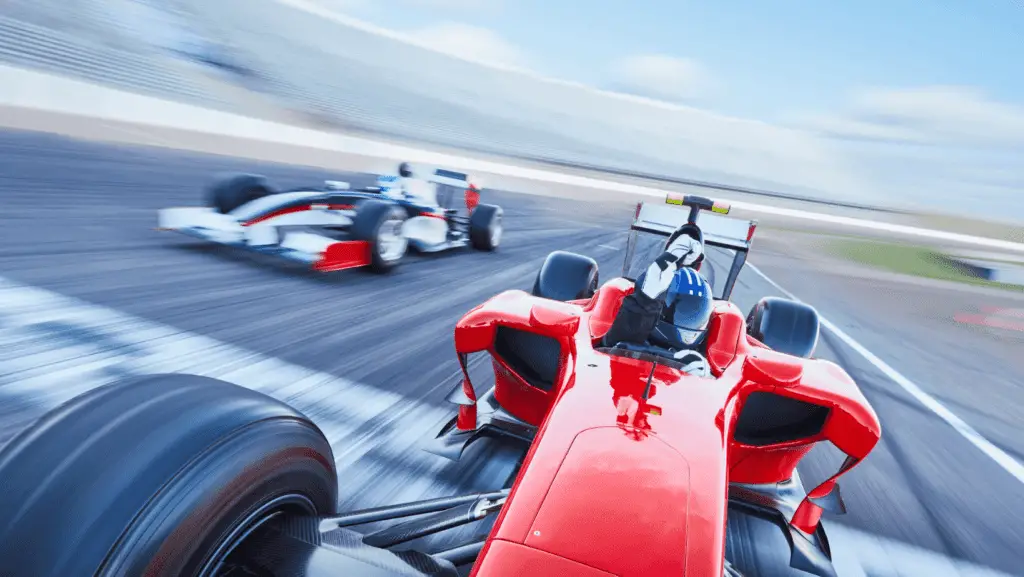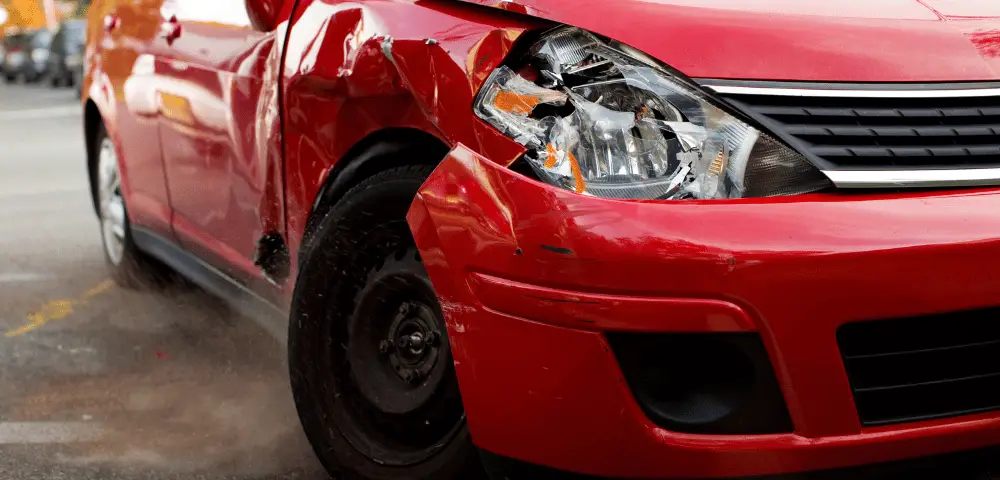It happens to the best of us. You’re pulling out of your driveway one day and end up turning too close to the curb. Before you know it, you’ve hit the curb or driven over it.
Some stop right away to check the extent of the damage. Others, however, just ignore them and keep on driving.
Whether you check right away or later on, your vehicle is sure to sustain some damage. This could be minor scratches to the tire’s rim or bigger problems like a damaged suspension.
Read the post below to get a detailed answer to the question, “what happens when you hit a curb slowly?”
Does Hitting a Curb Always Cause Damage?
Yes, it does. However, the extent of damage differs and depends on the direction and speed at which you were driving.
So in some cases, you’ll end up with minor issues like scratches and scuffs. But in others, you may end up with some nasty damage to key parts like control arms, fuel lines, and tie rods.
7 Potential damages from hitting a curve
If you accidentally hit a curb, expect one or more of these problems:
1. Suspension damage
One thing that’s likely to get damaged when you hit a curb is the suspension system. The front suspension is made of several elements, all of which are crucial.
The control arms are among these key parts. They help the suspension system to move up and down in a moderate manner whilst holding everything else in place.
The steering knuckle or spindle is also a part of the suspension. This is the component responsible for transferring the movements of the steering wheel to the front tires.
If any of these elements get damaged, you’ll find it incredibly difficult to control and steer your vehicle.
Question is, how will you know if the vehicle’s suspension is damaged? Well, the most suspension-related symptom from curb damage is increased bouncing.
Ideally, the suspension system should keep you from being flung around, especially when you encounter potholes or rough terrain.
So if you find yourself being tossed around, or worse, the car has a really hard landing each time you go over a bump, the suspension is most likely damaged.
2. Broken strut and Lower control arm damage
The strut is a key element of modern-day suspension systems. It replaces the upper ball joint and the upper control arm, which are common in conventional suspensions.
Struts serve two main functions. First off, they act as shock absorbers. Secondly, they provide structural support for the suspension. Meanwhile, the control arm is the element that keeps the tire attached to the steering wheel.
Hitting a curb, especially at top speeds – can cause potential damage to the strut and control arms.
3. Misalignment issues
One thing that you may not notice immediately after hitting a curb is misalignment. In fact, if you only hit the curb slowly, this will likely not interfere with your car’s alignment at all.
However, hitting potholes, speed bumps, and curbs repeatedly can make your car a bit wonky. When this happens, it will start to drift or pull excessively to one side. The end result of this is uneven tire wear.
If you suspect a misalignment issue after hitting a curb, there’s an easy way to detect this. Simply drive to an open field or empty parking lot. Next, drive the car in a straight line and at a low speed.
Ideally, the steering wheel should point straight ahead. So if it’s leaning towards one side – either left or right- chances are that your car is misaligned.
4. Tire damages
The tire is the only part that’s always in contact with the road. As such, it’s among the first things that are likely to get damaged by the sharp edges of a curb
The severity of the tire damage depends on how you were driving. For instance, if you were driving parallel to the curb, then the tire sidewall is the part that’s likely to get damaged. Unfortunately, sidewall damage is impossible to repair. This means you’d have to replace the entire tire.
Hitting the curb straight ahead is the best-case scenario when it comes to tire damage. It doesn’t cause as much damage. The worst that can happen is the tire gets a tear or flat spot – both of which are easy to repair. This means you won’t have to replace the whole tire.
5. Cosmetic scratches
If you were driving at a turtle-like speed, you might get away with just a couple of cosmetic scratches.
The most common damage from this is curb rash. This phrase is used to describe the scuff marks or scratches left on the rim of the tire when you hit a curb.
A curb rash is one of the easiest problems to fix. All you need is a little bit of sandpaper and filler to apply on any indentations.
6. Steering problems
Hitting a curb can also wreck the steering system of your car. The main damage related to the steering entails broken sway bars.
Also known as anti-sway or anti-roll bars, they keep the car from swaying or leaning to one side. This is particularly useful when taking sharp turns.
There are a couple of signs that indicate the sway bars are broken following curb damage. For one, you may hear rattling sounds. Two, the car will have poor handling.
The tie rods can also get damaged when you hit the curb.
Tie rods are responsible for connecting the steering gear to the spindle or steering knuckle. If you end up with a broken tie rod after hitting a curb, you’ll have difficulty controlling the car during turns.
7. Transmission problems
If you were driving a front-wheel drive car when you hit the car, there’s a very high probability of experiencing transmission and shifting issues.
The impact may have resulted in the breakage of the transmission case, disconnecting of the cables, and cooling lines. If you suspect a fault in the transmission, take your car for a thorough inspection.
In the best-case scenario, the transmission is just slightly damaged and can be fixed with a case housing repair or simple line replacement. But in the worst-case scenario, you’ll have to swap the entire transmission with a new one.
How fast do you have to hit a curb to cause damage?

You don’t have to be driving too fast to cause damage to your car. Even if you were driving at 5 or 10 miles per hour, it will get damaged in one way or another.
However, if you were driving at a low speed, the damage won’t be too severe. You may end up with just a few cosmetic issues like scratches.
But if you were driving super fast, expect serious damage like misalignment, damaged suspension, or bent rims. In fact, bent rims are evidence that you have a cracked wheel on your hands, requiring an immediate replacement.
Can hitting a curb cause no damage?
No, it can’t. Hitting a curb will certainly cause some form of car damage. However, the severity of this damage depends on the speed at which you were driving.
Best practices to follow when you hit a curb
As tempting as it is, you shouldn’t continue driving after hitting a cub. Doing so can exacerbate damage, leading to higher collision repair costs down the road.
So instead, you should pull over and examine the damage caused. This way, you can determine whether it’s safe to continue driving or fix the damaged part first. The following is a list of things to check if you hit a curb:
- Check the tires for cosmetic damage, such as scrapes and cuts
- Check the section underneath the car- ideally, there shouldn’t be any parts hanging too low
- Look for steering issues – does your car handling feel the same? Does it keep veering off to one side?
The Bottom Line
Hitting a curb – whether you’re driving fast or slow – is sure to damage your car in one form or another. If you were driving slowly, you might get away with minor issues like scratches.
But if you were driving pretty fast, you’ll want to have the suspension system, steering, and tires inspected for damage.


